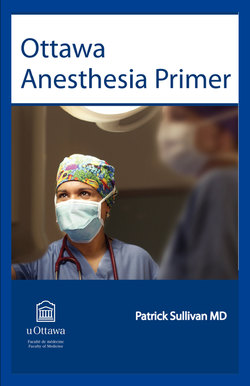Читать книгу Ottawa Anesthesia Primer - Patrick Sullivan - Страница 18
На сайте Литреса книга снята с продажи.
Cardiovascular System:
ОглавлениеSeveral disease processes can influence the cardiovascular system, and cardiovascular physiology can be altered significantly in the perioperative period.
Patients with coronary artery disease (CAD) are at risk for myocardial ischemia or infarction throughout the perioperative period. The exact mechanism of perioperative myocardial infarction (MI) is complex and involves both thrombus and supply-demand mechanisms. The patients at highest risk are those who have had a recent MI and those with unstable angina.
When assessing a patient at risk for CAD, find out whether the patient previously suffered a MI and, if so, determine the management strategy used. Possible strategies could necessitate treatment with medical therapy alone, percutaneous coronary intervention (PCI), stenting, or coronary artery bypass grafting (CABG).
The patient with a coronary stent placed within the preceding year is at high risk of perioperative cardiac events.6 The evaluation requires multidisciplinary consultation and careful planning. Cardiology consultation may be required.
Determine the severity and frequency of the patient’s ongoing angina pain using standardized reference scales, such as the Canadian Cardiovascular Society Functional Classification of Angina (Table 3.2)7, and be sure to get a sense of the stability or progression of the patient’s disease. Inquire about other coexisting non-cardiac diseases, such as hypertension, cerebrovascular disease, diabetes, smoking, and renal insufficiency. The presence of these conditions places the patient at an increased risk of a perioperative cardiac event.
The presence of congestive heart failure (CHF) is one of the most important risk factors for perioperative morbidity and mortality. When assessing a patient at risk for cardiac disease, the goal is to identify and minimize the effects of heart failure. Inquire about signs and symptoms of CHF (Table 3.3), including fatigue, syncope, dyspnea, orthopnea, paroxysmal nocturnal dyspnea (PND), and cough.8 Patients exhibiting signs and symptoms of decompensated or unstable CHF have an increased postoperative risk and should be optimized prior to elective surgery.
Valvular heart disease presents a special set of concerns to the anesthesiologist, including unfavorable and even dangerous alterations in hemodynamics with general and major regional anesthetic techniques. Significant valvular disease may present with a murmur, arrhythmia, or poor functional capacity. When a murmur is heard, an attempt should be made to characterize it in terms of intensity, location, timing (within the cardiac cycle), and radiation.
A systolic murmur heard over the right clavicle in an elderly patient would be considered highly suspicious of aortic stenosis and require further evaluation if accompanied by left-ventricular hypertrophy (LVH) that has been substantiated by (echocardiography) ECG.9
The preoperative assessment may identify a history of arrhythmia, previous pacemaker insertion, or symptoms suggesting the need for a pacemaker.
Electrosurgical cautery units as well as other electrical devices in the operating room can interfere with the normal functioning of a pacemaker or implantable cardioverter-defibrillator (ICD). If the patient has a pacemaker or ICD, students should ask the anesthesiologists for their recommendations concerning perioperative management, as a cardiology assessment and intervention may be required prior to the surgery.10
